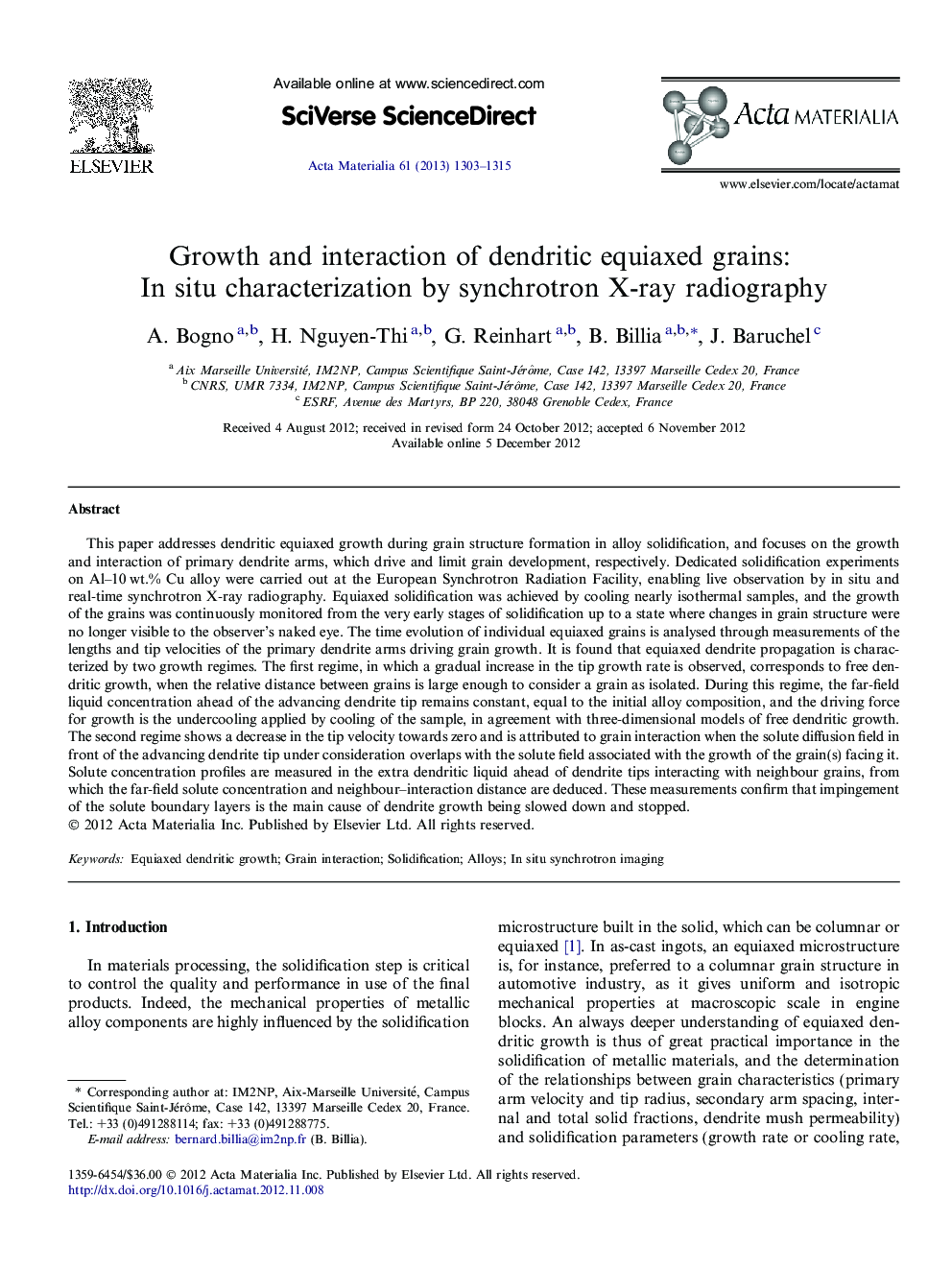| Article ID | Journal | Published Year | Pages | File Type |
|---|---|---|---|---|
| 1446361 | Acta Materialia | 2013 | 13 Pages |
This paper addresses dendritic equiaxed growth during grain structure formation in alloy solidification, and focuses on the growth and interaction of primary dendrite arms, which drive and limit grain development, respectively. Dedicated solidification experiments on Al–10 wt.% Cu alloy were carried out at the European Synchrotron Radiation Facility, enabling live observation by in situ and real-time synchrotron X-ray radiography. Equiaxed solidification was achieved by cooling nearly isothermal samples, and the growth of the grains was continuously monitored from the very early stages of solidification up to a state where changes in grain structure were no longer visible to the observer’s naked eye. The time evolution of individual equiaxed grains is analysed through measurements of the lengths and tip velocities of the primary dendrite arms driving grain growth. It is found that equiaxed dendrite propagation is characterized by two growth regimes. The first regime, in which a gradual increase in the tip growth rate is observed, corresponds to free dendritic growth, when the relative distance between grains is large enough to consider a grain as isolated. During this regime, the far-field liquid concentration ahead of the advancing dendrite tip remains constant, equal to the initial alloy composition, and the driving force for growth is the undercooling applied by cooling of the sample, in agreement with three-dimensional models of free dendritic growth. The second regime shows a decrease in the tip velocity towards zero and is attributed to grain interaction when the solute diffusion field in front of the advancing dendrite tip under consideration overlaps with the solute field associated with the growth of the grain(s) facing it. Solute concentration profiles are measured in the extra dendritic liquid ahead of dendrite tips interacting with neighbour grains, from which the far-field solute concentration and neighbour–interaction distance are deduced. These measurements confirm that impingement of the solute boundary layers is the main cause of dendrite growth being slowed down and stopped.
